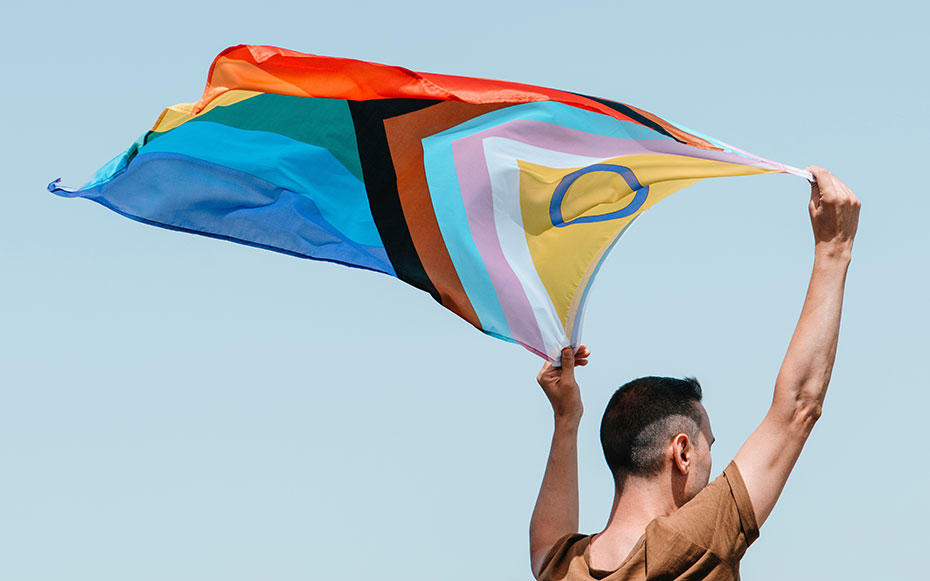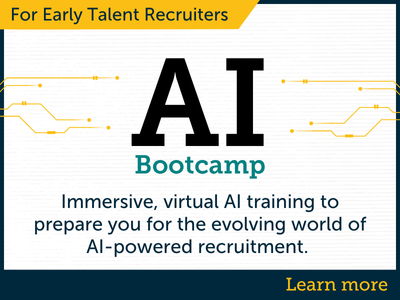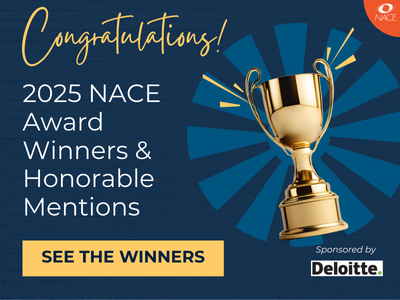Being an ally of the LGBTQ+ community isn’t just one thing, according to Cody A. Rapp and Riky Hanlan, who lead the LGBTQ & Allies NACE Affinity Group and explain that allyship looks different, sounds different, and feels different to everyone in the LGBTQ+ community, and, therefore, is challenging to define.
“People often focus on what the ally needs to do without first thinking about the community or individual,” says Rapp, founding operations manager at Emerge Career.
“In reality, it can be more helpful to start with what an individual or community wants or needs and, from there, to take action. Allyship requires action. We think that being an ally means choosing to speak and act in a compassionate and empathetic manner for the support and betterment of people who identify as LGBTQ+. What that actually looks like is up to each one of us.”
Hanlan, associate director of career services, assessment and inclusion at Worcester Polytechnic Institute, points out that there are times when an ally may have an intuition that leads them to speak up and show up for a community member or regarding a particular injustice.
“But,” she cautions, “it won’t always be that overt. Allyship doesn’t need to be at the front of a Pride parade or demonstration. It can look like accountability in the boardroom or division meeting. It can look like going the extra mile to ensure the safety of a student or new hire to make sure they feel a sense of belonging. It looks like keeping people safe and healthy in our schools and in our companies.”
Rapp and Hanlan offer several suggestions for individuals to become allies and be proactive in their allyship:
- Educate yourself—Educate yourself about current political and social events and how they impact members of the LGBTQ+ community. Federal, state, and local policies can be a good starting place, and consider social media accounts, movies, and documentaries to further your knowledge and awareness.
- Participate in formal training—Complete a diversity training or certificate program, Safe Zone training, or other program and stay up to date with bias intervention and current terminology/language for the community.
- Show up—Attend campus and ERG Pride events, lavender graduations, and/or other partnership events with the institution’s/organization’s LGBTQ+ Affinity Group.
- Signal inclusivity and acceptance—As an ally, there is so much you can do to step further into your ally identity, like placing a Pride flag or rainbow sticker in your office. Add other Pride, inclusivity, and/or LGBTQ+ insignia to your door, emails, or office. If you’re remote or hybrid, think about how these items can be in your camera view when you’re on screen for students and colleagues to see.
- Ask curious questions—To the extent that it is appropriate in your relationship with another person, ask them for feedback, which could sound like, “I want to be a better ally. What could I do to better support you and show up for other LGBTQ+ team members?”
For institutions and organizations to demonstrate their LGBTQ+ allyship, Hanlan and Rapp recommend they:
- Model inclusive language in verbal, digital, and print communications—Whether it is in a 1:1 or mass internal communication or something external spoken or printed, be mindful of the words used as they signal the level to which the organization is really inclusive and creating psychological safety for its employees and students.
- Prioritize continuous growth by committing time and resources to learning, reflection, and growth—“Culture eats strategy.” You can build a diverse culture of inclusivity when you commit the time and resources to learning, reflecting, and growing as it pertains to hiring and supporting students and staff.
- Engage authentically through communications, expectations, feedback, to show genuine care and interest—This can be accomplished through communications, expectations, feedback, and more. Trust is earned and leads to a sense of belonging.
- Value diverse perspectives from those who have a variety of lived experiences and lenses.
- Understand generational context—This is important as Gen Z and, shortly, Gen Alpha join the workforce and leadership. Examples of this context include rainbow Capitalism, the AIDS crisis, marriage equality, and more.
LGBTQ+ Connections & Resources
- Taking Up Space vs. Adding to a Space: Questions to Consider
- Pronouns Matter
- NACE Brief: Understanding the Experiences and Attitudes of LGBTQ+ Students
- Join the LGBTQ & Allies NACE Affinity Group at www.naceweb.org/about-us/nace-affinity-groups.
- A list of resources that members of the NACE Community find helpful and valuable in working with LGBTQ+ college students, job candidates, and employees can be found at www.naceweb.org/job-market/special-populations/nace-community-lgbt-resources/.





